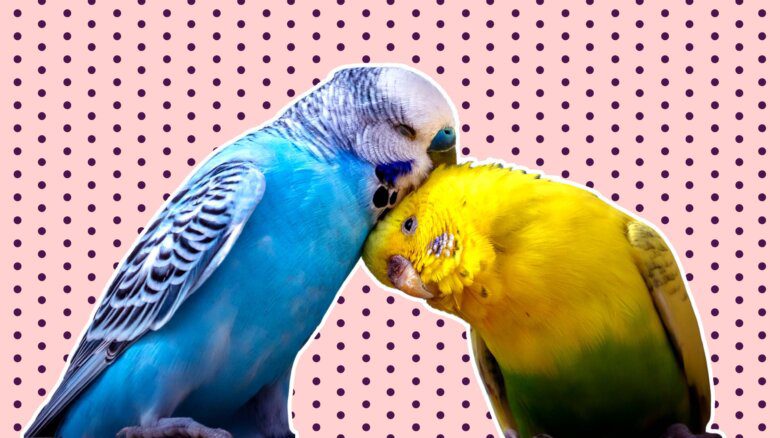Stories help define us as individuals, a community and a society. I’m always amazed how homosexuality flourished in places that, to us, seem discriminatory or homophobic. Covering the 2016 Tokyo Rainbow Pride parade, and general attitudes towards Japanese LGBT people, writer Philip Brasor wrote about how Japanese media have “always been essential to the reinforcement of these stereotypes.”
In the past, media outlets would obscure participants’ faces, the excuse being to protect participants’ privacy, but as Brasor suggests, it also “relieved viewers of the burden of having to acknowledge people who weren’t with the program, so to speak.” No need to worry about checking your attitude if your doctor, or neighbour, or family friend is queer or trans.
Funny that same-sex love, at least male homosexuality, was once not only celebrated, but a cultural pastime. Published in 1687, Nanshoku kagami, or The Great Mirror of Male Love, was a book of 40 short stories by Ihara Saikaku.
This was at the height of the Tokugawa period when merchant classes, while still considered lower social status than farmers, were enjoying greater wealth that gave them access to prostitutes, urban pleasure quarters, art and popular fiction — the four were often interlinked.
To these chnin, “townsmen,” the assumption was that romantic and sexual love was to be found outside of the institution of marriage. By this point in Japan’s history, monastic and samurai traditions of age-based hierarchal relationships legitimized homosexuality, so a culturally legitimized “cult of sexual connoisseurship” developed around adolescent boys without any stigma.
The latter half of Saikaku’s collection focuses on relationships with men and young kabuki actors, but it’s the samurai tales that interest me, one in particular, called “Implicated By His Diamond Crest.” The love story starts with Shimamura Daiemon, a 27-year-old samurai, renowned weaponist and engineer; a masterless samurai devoted to his family.
Daiemon attends a firefly viewing party near the outskirts of town near a statue of Buddha said to be carved by Kkai (posthumously known as Kb-Daishi), the founder of Japanese Buddhism — rumoured to be the man who brought homosexuality to Japan — where he anonymously foils an intrigue, saving the reputation of a young samurai named Haruta Tannosuke.
As it turns out, the man attempting to implicate Tannosuke in the poisoning plot (foiled by Daiemon) is a spurned admirer — the evidence given to Tannosuke anonymously by Daiemon allows him to identify the schemer, but the younger samurai lies to save his spurned lover from punishment.
Tannosuke was renowned for his girlish beauty, confounding everyone that, at the age of 15, he had not yet taken a lover, as was expected. The young samurai tries to discover the identity of the man who had saved him, but a year goes by and he can only pray they’ll meet.
The two eventually cross paths by accident on a spring walk, and they start to weep together, Tannosuke out of graciousness, Daiemon upon realizing that he had worried Tannosuke with his anonymity.
Saikaku explains, “As they wept there together, a strong attraction developed between them. Without ever exchanging formal vows of love, they became lovers.” However, to avoid discovery, Daiemon crosses the river behind Tannosuke’s house for their assignations.
One fateful evening, Daiemon goes to the river bank, and, save his sword, strips naked and wades through the deep water, almost washed away. At a nearby teahouse built on piers over the river, a group of samurai are partying it up, but they don’t notice him because of the weather: “One moment the moon’s light would fill the sky and the next moment be obscured by clouds, not unlike our unpredictable human lives,” a beautiful nature metaphor, if a bit heavy handed on foreshadowing.
Daiemon makes it, only to find his young lover has just woken from a nightmare. “He pressed Daiemon’s wet body against his and took him inside,” Saikaku explains, adding, “Daiemon had soon forgotten all his sorrows.” Pillow talk reveals that Tannosuke had dreamt that his lover had drowned and even just remembering the dream makes him weep again — there’s a lot of sexy weeping in this story.
Daiemon calms the boy by saying, “When we cannot see each other for a long time, at least we can meet in our dreams. Nothing could be better as far as I’m concerned.”
A naked Daiemon returns to the river, but this time the partying samurai notice him. They think he is a large bird and they draw their arrows and fire on him.
Daiemon is struck in the side, but manages to make it home where he leaves a garbled message to make it look like “he had lost his mind and manfully committed suicide.”
Why is this preferable to the truth? When Tannosuke rushes to his dead lover’s side the next day, he is shown the arrow by Daiemon’s family, marked by a symbol of the samurai who shot the killing blow. He instantly decides to take revenge on the mistaken samurai. During one of his daily visits he brings the samurai, the two fight to the death, and Tannosuke is buried in Daiemon’s tomb. “There will never be another heart as true as Tannosuke’s,” the story concludes.
What does this tragic and somewhat silly story of two samurai have to do with Tokyo Pride, you might be asking yourself. My answer: narrative control.
Saikaku’s story was a piece of popular fiction written for average, horny Japanese men, the equivalent of a gay guy watching Queer As Folk, maybe. At that point in history samurai were, after all, little more than courtiers and bureaucrats. Paul Gordon Schalow, translator of the first English version of Saikaku’s short stories, writes that, “the attitude Saikaku showed towards samurai in Nanshoku kagami was dictated by his desire to create an idealized vision of male love.”
At some point it was not inconceivable for two men to love each other, certainly during the Tokugawa period of 17th-century Japan, when Saikaku’s stories are likely set, with the tragic but romantic outcome that they’d end up together in death as in life. This is a far cry from Japan today, which is steeped in conventional gender norms, according to Brasor’s report — not at all helped by a history of Christian missionary work and prudish post-war Western influence.
I’m not saying I want Japan to return to boy-fucking, but through much of their history same-sex love was not only beautiful, but idealized, thanks in part to stories like these.
History Boys appears on Daily Xtra on the first and third Tuesday of every month. You can also follow them on Facebook.


 Why you can trust Xtra
Why you can trust Xtra


